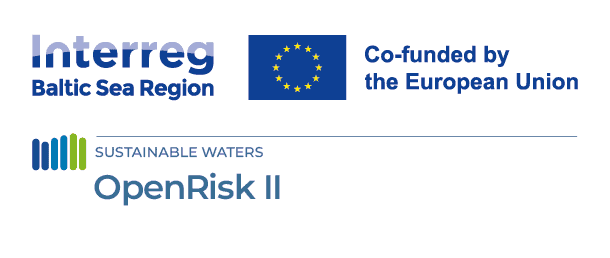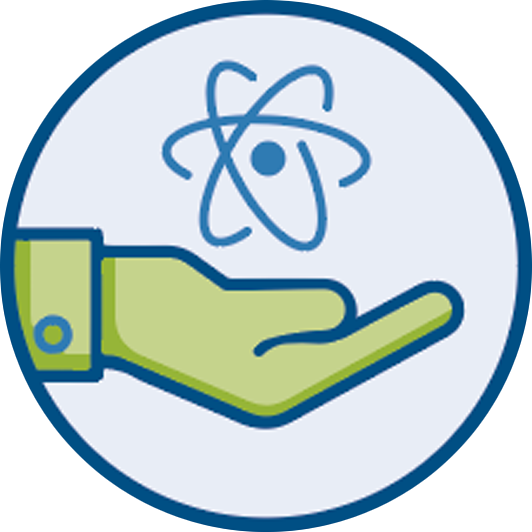
Traficom develops better risk management practices for maritime organizations in the Baltic Sea region and beyond within OpenRisk II
19 April 2024
The OpenRisk II project, which aims to reduce accidents and related environmental impacts in the Baltic Sea, is financed by Interreg Baltic Sea Region. The lead partner of the project is the Finnish Transport and Communications Agency (Traficom). One of Traficom’s main regular duties is ensuring the safety of shipping and preventing marine and atmospheric pollution caused by ships.
Special Advisor Mirka Laurila-Pant and Chief Advisor Valtteri Laine from Traficom explain the main interests in this project as follows:
“We need to have a good understanding of the risks arising from our internal and external working environment and be able to follow changes in these risks over time. This risk-related information can help Traficom to allocate resources where they are needed most. In other words, to manage the risks within our area of responsibility in the maritime industry.
The OpenRisk II project aims to provide tools for a shared and dynamic maritime traffic risk picture of the Baltic Sea region. The project thus addresses our needs for risk-related information. In the context of this project, the most interesting parts for us are the adaptation of the AISyRISK tool to the Baltic Sea and the development of the new R-Mare matrix risk maturity tool. While the first tool allows us to monitor changes in risk levels in Finnish territorial waters and beyond, the second tool is applicable for evaluating the risk management performance of our agency. Both can provide useful risk-related information for us, from different perspectives.”
Organizational risk maturity assessment practices have demonstrated their efficacy in enhancing risk management practices in various industries, transportation sectors, and governmental entities. Nevertheless, the maritime sector has yet to see the development of adequate risk maturity tools.
Within the scope of the project, Traficom is leading the development of the Risk Maturity Model (R-Mare). Laurila-Pant and Laine explain why this model is important for maritime authorities:
“In the OpenRisk II project, Traficom aims to address these needs by developing a new risk maturity tool called the R-Mare, founded on a self assessment matrix technique. This matrix includes 17 risk management attributes, a five-step risk maturity scale, and associated risk maturity grid descriptions. By using this matrix, Traficom and other maritime administrations of the Baltic Sea region can evaluate their current risk management performance, identify areas for improvement, and develop a plan for achieving a higher level of risk management maturity. The R-Mare matrix tool is currently under testing. The preliminary test results indicate a high degree of reliability concerning its results. Both reliability and validity are essential criteria when considering the tool´s overall quality.”
Not everyone may understand why a risk management process is necessary. Laurila-Pant and Laine explain the importance of such a model for Traficom and other similar national maritime organizations:
“The internal and external working environment of maritime administrations is continuously changing. For example, the administrations are facing internal reforms regularly, the technology in the maritime sector is evolving rapidly, and new threats are emerging due to the current geopolitical situation. Because of this, agencies like Traficom need to be aware of associated risks and able to adapt to changing conditions. Otherwise, they may not be able to perform their mandatory duties successfully.
The key to the successful implementation of risk management into the activities of maritime administrations is the strong commitment of leadership and staff to this task, as well as shared values focusing on the goals of the IMO (International Maritime Organization). Effective risk management also requires sufficient resources (e.g., staff, appropriate tools), the development of tailored processes, and training opportunities, to name a few. Therefore, discussions during the OpenRisk II Kick-off conference with experts underscored the importance of leveraging open-source data to enhance the effectiveness of risk assessment. Additionally, there was a focus on identifying new data requirements and optimizing data collection processes.”
“You are also planning to develop new tools for assessing the quality of Risk assessments within the OpenRisk II project. Can you tell us more ?” Laurila-Pant and Laine clarify;
“In the OpenRisk II project, Traficom is leading the development of the R-Mare matrix tool, aimed at assessing the quality of risk management in maritime operations. This tool delves also into the various stages of risk assessment and management within maritime authorities. Users can not only evaluate each attribute’s maturity level but also articulate the reasoning behind their assessments, offering qualitative insights into areas such as hazard identification and data utilization. This qualitative data is crucial for pinpointing deficiencies in data usage or sharing within an organization, thus facilitating the identification of improvement areas and the formulation of strategies to enhance risk management maturity.”
The OpenRisk II project is associated with both the EU Strategy for the Baltic Sea Region (EUSBSR) Policy Area (PA) Safe and Ship. More precisely, in PA Safe (specifically in Action 4), OpenRisk II plays a vital role in enhancing maritime safety and security by providing risk management solutions, ultimately enhancing readiness and response to maritime accidents and security concerns.
Traficom is also a coordinator of the PA Ship and a co-coordinator for PA Safe together with the Swedish Maritime Administration. Laurila-Pant and Laine explain how they will link EUSBSR PAs and OpenRisk II as follows;
“OpenRisk II will actively participate in the Operational Groups of both policy areas, which serve as advisory boards to facilitate information sharing, policy inputs, and collaboration. As both PA Safe and PA Ship have steering groups comprising maritime authorities from all Baltic Sea countries, OpenRisk II gains a valuable opportunity to showcase its progress and outcomes to competent national maritime authorities across the region, fostering greater utilization of the developed tools.”
OpenRisk II: Better maritime risk management for the BALTIC SEA (youtube.com)
by Ali Abaday – NDPTL Secretariat





